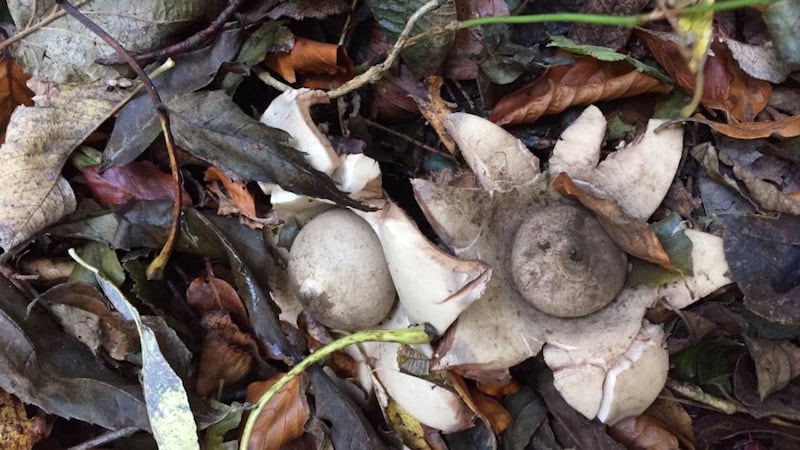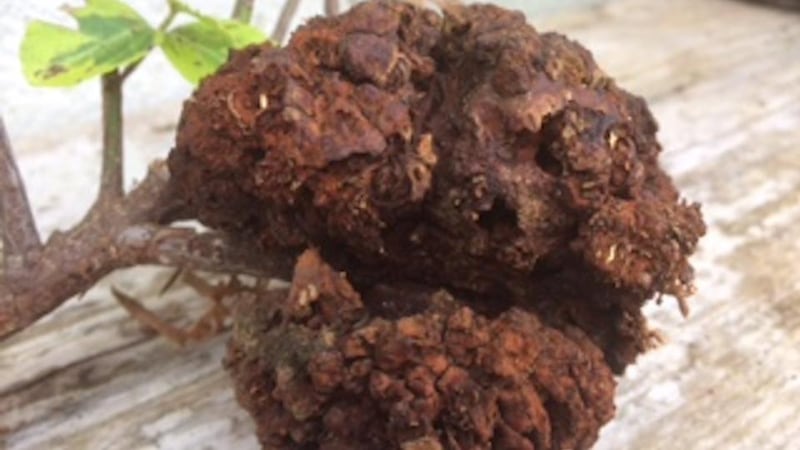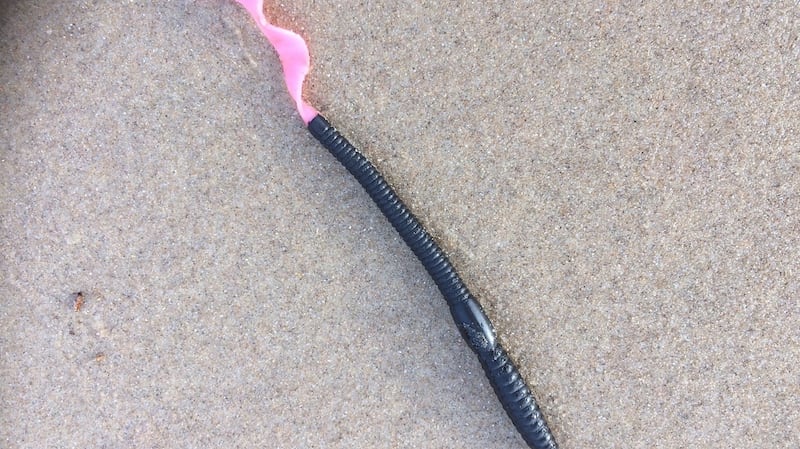Last month we were getting strange bites. Could it have it been from this insect, which seems too big to be a mosquito? Martin Swords, Ashford, Co Wicklow.
It is the banded mosquito, Culiseta annulata, one of the largest mosquitoes, and found in this country.
I discovered these earthstars below a chestnut tree in our garden. Heather Thompson, Crumlin, Co Antrim.

While taking children on a school trip to Marlay Park, one of them spotted these mushrooms. Meadhbh.
These fungi are one of the earthstars, Geastrum spp, which fruit at this time of year.

I came across this object while doing a winter tidy in west Cork. It has a woody, cork-like texture and seems like a growth out of a little branch. Brendan Conroy, Raheny, Dublin.
It is crown gall caused by the bacterium Agrobacterium tumefaciens, which gains access to woody plants and tree through wounds in the roots.

I spotted this creature on the beach at Brittas Bay after hurricane Ophelia. It was approximately five inches (127mm) long. Tony Delahunt, Brittas Bay, Co Wicklow.
It was a lugworm, which lives in the sand and is commonly used as bait by sea anglers.

I took this picture on an exposed upland area of Bere Island in the summer. It appears to be an oily slick on the surface of the water. I was puzzled as there was not any source of oil in the area. Fintan Lyons, Clontarf, Dublin.
The oily film is the result of the breakdown of organic matter, aided by warm temperatures.
- Ethna Viney welcomes observations and photographs at Thallabawn, Louisburgh, Co Mayo, F28F978, or by email at viney@anu.ie. Please include a postal address










